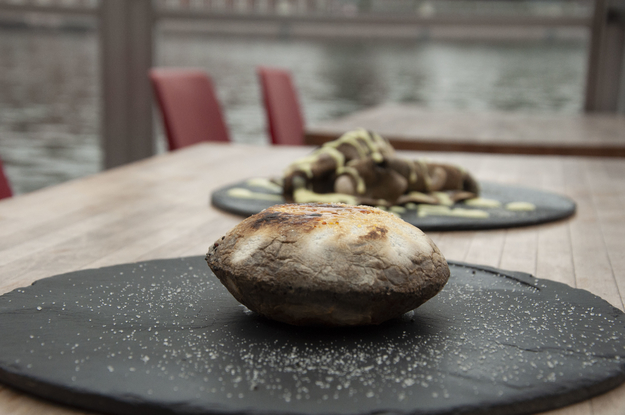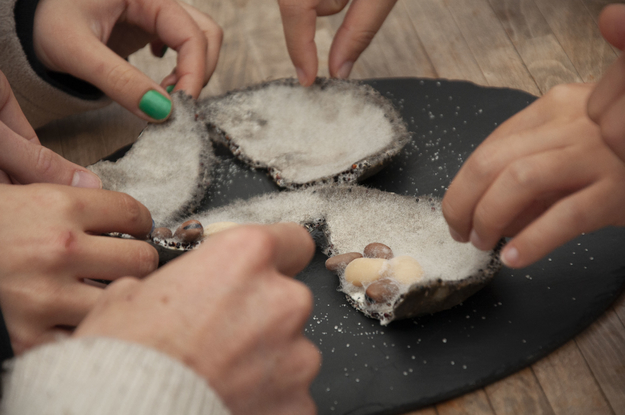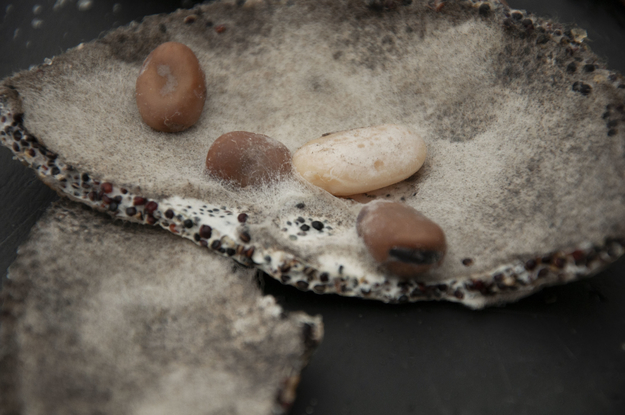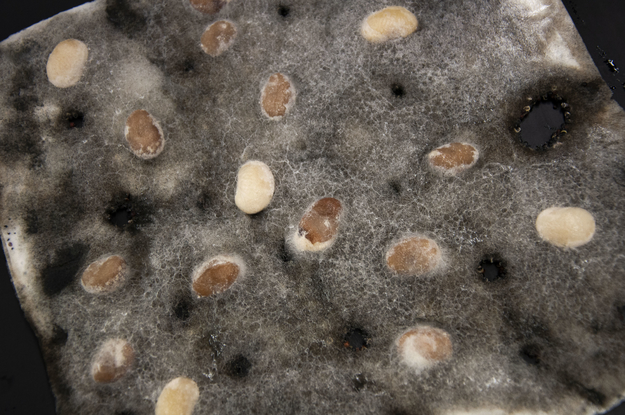We wanted to see how people react to the ball of mycelium and also the sheet with beans scattered on it. They were asked to sit at the table, with the two plates in front of them. Obviously the ball got more attention. They started to bounce the ball.
Randomly folded mycelium sheet with beans served with aquafaba cream -
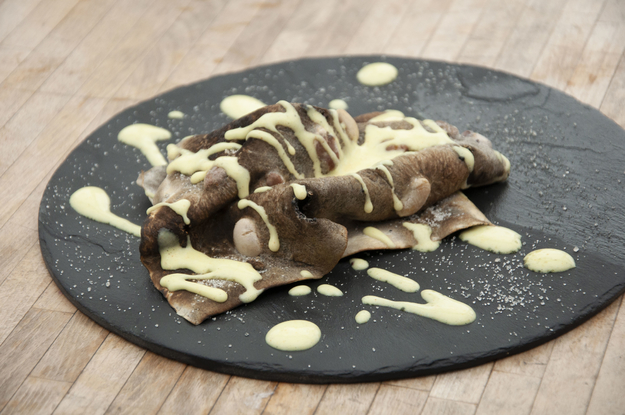
Mycelium ball after baking - Sugar is burnt on its surface after baking
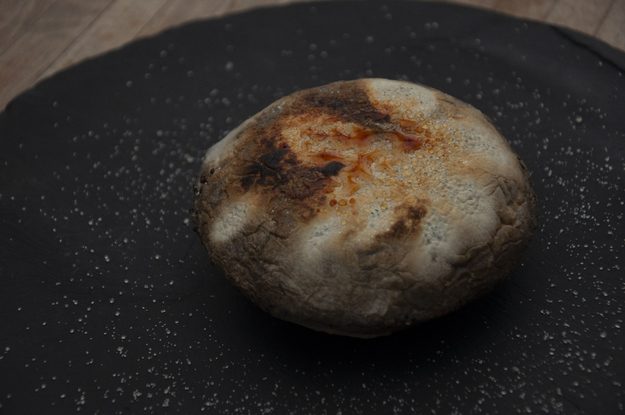
"Do we get any cutlery?" Our colleague Pierre asked.
The answer is no, because we wanted to see how people use their hands to interact with this object. Just a few seconds later, the ball was opened somehow and the beans are there. We got some surprising voice then and at the same time, voice from June Li: "I don't feel safe to eat it. I like touching it though."
Bing was disappointed by the fact that only brown-greyish beans are hidden inside: "I was expecting more colourful things inside." (I guess she wants some candy or sweets because she is for sure the biggest dessert fan I have ever seen. Well, probably she meant for fruits.)
People definitely associated the ball with mould: "...like a mouldy pancake." I think that's what we want to achieve. The inside layer is still mouldy, because it wasn't in touch with direct heat, and the space allows it to keep the filaments and some black spores. I was also glad that people think it looks like "tumble dryer dust". The look inside is not something nice to the eye, should we work on it or take it as an advantage?
We observed that our colleagues couldn't wait to rip the beans off the mouldy filaments, which left a nice tidy room on the mould.
I personally liked the taste of this mycelium, because it's very fresh, natural and neutral. People find it very dry and earthy, though. However, they did appreciate it if we combine this texture with creamy food like bananas and creams. Pierre and Maria had an idea of injecting liquid or cream into the ball, which would be adding to the dramatic feeling when the ball get opened at one moment.
We want to give big thanks to our participants for the feedbacks and we are happy to have them asking: "How did you make it? " because our goal is to make people feel curious about the edible fungus/mycelium and the challenge they have towards traditional food and eating tools. Seeing them get their hands on to play with the food is a great pleasure. We were also glad to explain how we made the ball by connecting two halves in a second-incubation, that's how mycelium connects organic matter together. In this eating process we hope that people can learn about the fungus its mycelium, and more importantly why it makes sense in natural system.
Now, we are curious to explore more interesting forms of this closing food structure: can it be more organic, provocative forms? Can it have other affordance that make people smell, shake or even lick? We are also into creating surprising food inside the "ball" structure, other than just plain beans.
